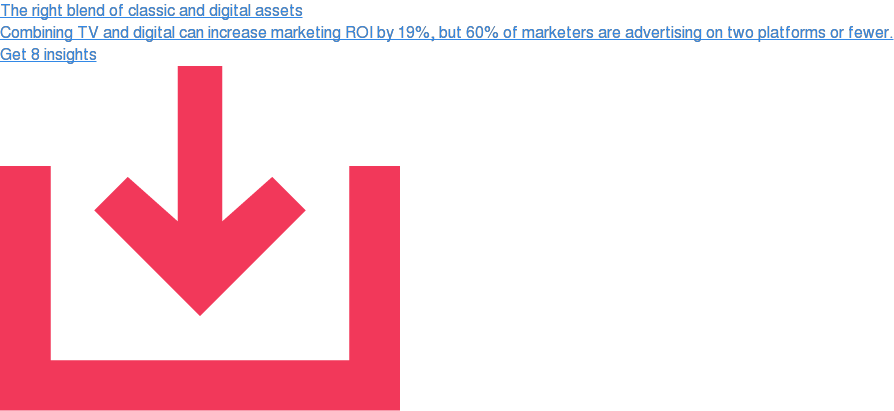Dave King, MD at Exterion Media, argues that digital transformation will affect all areas of a business, requiring a clear vision of how that will play out across all teams in the organisation, and how it will help to improve the experience of the customer.
Investment in Out-of-Home (OOH) is growing, and digital is playing no small part in driving this market growth – as it is across other advertising sectors. The latest figures released by the Advertising Association and Warc revealed total advertising spend is up 3.7 per cent in the UK, with digital formats continuing to drive growth. Digital accounted for 38 per cent of the £1.1bn OOH advertising market in 2016.
It's no surprise that the advertising industry continues to invest in digital –and in OOH in particular– despite a time of wider uncertainty. OOH is holding its own against other traditional forms of advertising, with more investment in new digital and data-driven solutions redefining campaigns and how they are measured. This means more targeted campaigns, generating greater levels of engagement, and more accountability for clients.
Given that the digital transformation of the media landscape is evolving at such a rapid pace, businesses are fighting to keep up. It is little wonder then that some are increasingly transitioning to digital without fully understanding why, or even if, it is right for business.
Don't do 'digital for digital's sake'
With digital transition becoming increasingly incorporated into business strategies across multiple industries, it's tempting to become too focussed on keeping up with competitors. Many businesses are finding a reason for digital transformation when it is not necessary. This can be a big mistake.
Before jumping in, you need to ask yourself, why do you want to digitise your business? And how does your vision play out across different teams and divisions within the company? Decide on clear business objectives, and back these up with an informed strategy that will allow you to reach those goals. If the transition isn't implemented as a considered strategy, you run the risk of missing the mark and wasting resources.
Be savvy
Start the journey by taking a data-led approach to understanding the needs and wants of your customers. For us, customers are our clients, agencies, specialists, and also our end audience – commuters and shoppers. Take the time to consider what they want now, but also what they will need further down the line. Any strategy needs to be agile in its approach and geared around your customers – the media and advertising landscapes are transforming at pace, so it's vital you're planning ahead.
A great example of basing a business transformation on data comes from outside of the advertising industry. Shop Direct became 100 per cent digital in 2016. Its online retail brand Very.co.uk was growing sales by 19 per cent year-on-year, with 68 per cent of online sales coming from mobile devices in 2016/17. Going from a company which relied on catalogue customers to one with brands which are now solely online, was a bold move. But one that needed to be made if the company was to retain any share of the market. The e-tailer not only considered its audiences' increasing shift to shopping online and on mobile, but also the general shift of the retail industry, in which online is booming.
I believe that a transition to digital should be based on a customer-first approach combined with the right investment in new innovations and partnerships. Those that truly embrace digital and challenge the status quo without losing sight of what our customers want, will be the ones who thrive.
Take a rounded approach
Contrary to what some may believe digital transformation does not need to be all or nothing. There is still a lot of value in classic advertising if you know that is what your audiences value too. Take the Clash of Kings 360 wrap at Oxford Circus station for example. From our research, we know consumers want a blend of classic and digital assets, so we wanted to use classic creative advertising to drive awareness, but used the digital screens to engage with the clients' core audience of digital natives.
Further to this, data can be used to optimise a classic estate to deliver standout creatives to the right audiences. Our commercial partnership with Transport for London (TfL), Hello London, is a chance for us to take a fresh approach to thinking creatively about how to make advertisers' campaigns more effective, and make the consumer experience more engaging. Alongside tap in tap out data, our partnership with Telefónica, an integral part of Hello London, allows us to create a rich data mix, utilising anonymised data from 25 million O2 customers to identify audiences and provide targeted OOH campaigns.
Embracing digital and data helps advertisers make better-informed decisions based on a deeper understanding of audiences - to deliver better customer experiences, including relevant ads served at the right time.
At the end of the day, it's pretty straightforward. To successfully digitally transform, or to simply drive growth, you need to understand what works best for your overall customer experience, and take the time to do this properly. From this baseline, you can clearly understand the best path forward. If you get it right, new opportunities for growth will come despite what lies ahead.


